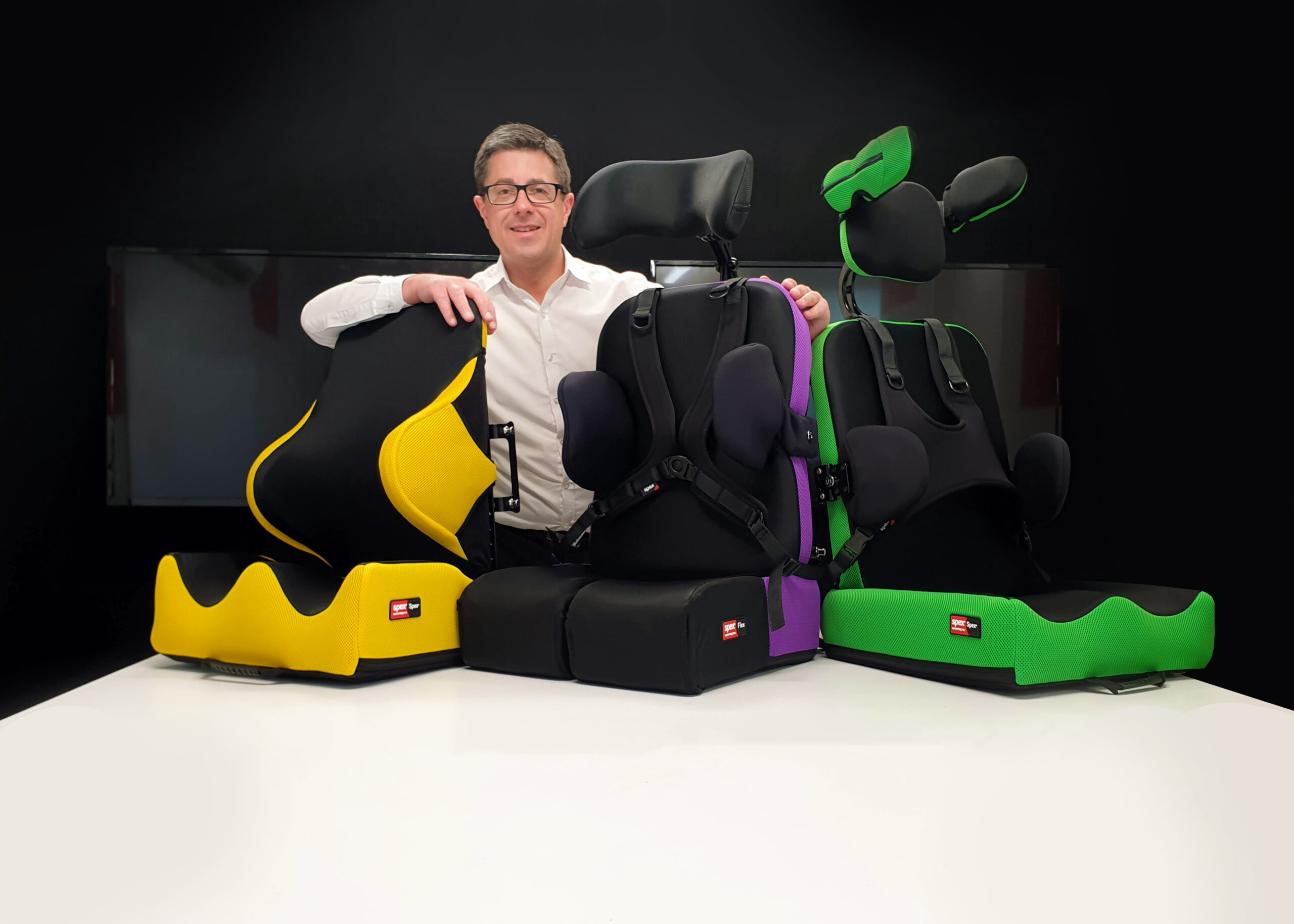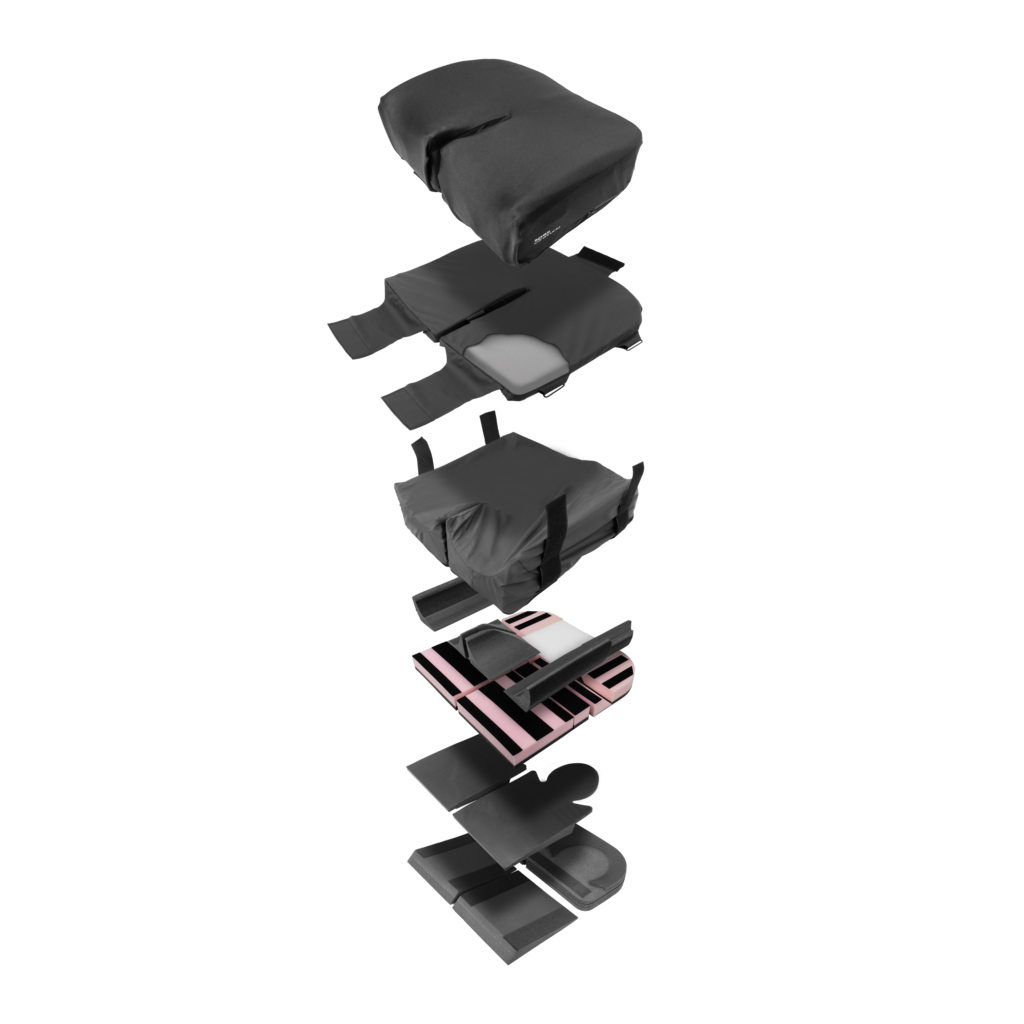In part one of this blog, we explored the definition of comfort, which clearly includes both physical and emotional aspects, and how we need to consider this within wheeled seated mobility. We explored how we do that, from a clinical perspective, in part 2. This blog will highlight another aspect of comfort that, perhaps, may link more closely with emotional comfort and that is service offering to support wheelchair users.
Wheeled mobility and assistive technology (AT) are an “ongoing process, as their [users] impairments, their lifestyles, and their occupational roles changed over time.” (Layton, 2012)
Previously I discussed that wheelchairs are designed for generic users and that a wheelchair’s ability to respond to the unique body shape of the wheelchair user is essential when optimising physical comfort. I also touched on the financial concerns and emotional distress that purchasing a wheelchair might have for wheelchair users and how easy it may be to access funding for maintenance issues and/or future changes to the wheelchair seating configuration in response to changing need over the longer term. Accessing funds and services to be assessed for (and receive) a wheelchair, and long-term maintenance and review of the wheelchair must be included in the long-term delivery of wheelchair services.
I want to highlight some findings from clinical evidence and publications I have discovered – they show that challenges persist along the continuum of service delivery and/or in variously resourced environments:
- There was a prevalence rate of 58.6% for inappropriate seating within 11 long-term care institutions. This varied between institutions and was affected by staffing, funding, policies relating to wheelchairs and decision-making philosophy (Giesbrecht, Mortenson & Miller, 2012).
- 80% of 139 elderly residents in institutional settings reported at least one of the following: poor posture, discomfort or hindered mobility (Shaw & Taylor, 1991).
- 60% of 94 wheelchair users in Zimbabwe were dissatisfied with their wheelchairs (considering durability, weight, ease of adjustment, effectiveness, safety, reliability and meeting user need) and 66% reported dissatisfaction with services offered to them (Visagie, 2015). Later research indicated the biggest recorded satisfaction related to comfort needs following implementation of comprehensive wheelchair services (Visagie, 2016).
- Ongoing NHS community rehabilitation for stroke (cerebrovascular accident) does not readily includes powered wheelchair provision even though this is supported within the National Institute for Clinical Excellence (NICE) guidelines; referral for electric powered indoor/outdoor wheelchairs varied according to age as well as across Primary Care Trust (PCT) areas (Frank, 2018).
- A study in Croatia identified a user satisfaction rate of 66% with wheelchair characteristics for comfort, and that there was better satisfaction by wheelchair users with the assessment process compared to the wheelchair selection, equipment trial, skills training and ability to ask for a second opinion (Štefanac, Grabovac & Fristedt, 2018).
- Adequate access to properly fitted wheelchairs improved with a more structured and comprehensive provincial wheelchair programme, as did a reduction in stress for the wheelchair user and their family (McEachern & Mortenson, 2019).
- The UK Muscular Dystrophy Campaign “Get Moving” 2013 highlighted funding shortages, increasing wait times to access specialist wheelchairs, delays in accessing repairs, being prescribed unsuitable wheelchairs or not having changing needs considered – all of these will clearly impact on physical and emotional wellbeing and overarching comfort. S. Khan stated “These wheelchairs are a necessity, not a luxury – without it I am hugely dependent on other people. I lead an active lifestyle. It is important to me. Having to essentially put my life on hold was frustrating and made me feel useless. July was a complete disaster, cancelling all plans, campaigning, voluntary work – even much anticipated birthday celebrations. I struggled to find support with maintenance locally …”
- A recent webinar by CECOPS (UK), 2020, highlighted the challenges of providing physical assessments and arranging timely review of wheelchair service users’ needs amidst the current COVID-19 pandemic (Donnelly et al., 2020).
- Funding may be a problem for many wheelchair users. Challenges may fall to the family or wheelchair user which can directly impact what is purchased (Ryan, 2019; Forster, 2017; Ryan, 2017) and can increase socioeconomic burden and distress.
We need to consider processes, referral pathways, policies, commissioning/funding, follow-up maintenance and review, as well as education to ensure wheelchair provision does not add to the emotional (and potential physical) discomfort of wheelchair users:
- A wheelchair user needs to know how to access a wheelchair, how to fund this (if not through statutory services or reimbursement) and that the prescription of the wheelchair is correct for their individual needs, including potential product trial and education about how the system can adapt to change.
- A wheelchair user needs to know that the wheelchair will not break and if it does develop any problems, that it will be quickly resolved so that he/she does not become restricted in function by not having a wheeled seated mobility device available.
- A wheelchair user who has a progressive condition needs to know that the seating system can respond to changes without undue delays that might lead to an unsupportive and physically uncomfortable seating solution. This may further hinder participation and therefore increase distress and worry.
- A wheelchair user who is growing needs a seating system that can readily adjust to growth spurts, without compromising on the support required. This requires consideration of both height and width adjustments within the chassis components as well as the seating primary contact surfaces (back rest, cushion, head rest).
Getting an individualised seating system requires funding, knowledge, skill, shared goal setting, procurement, acquisition, timely assessment, provision of review and maintenance services and a myriad of additional components to get it right.
How does Spex aim to respond to the long-term, emotional comfort needs of wheelchair users and their families?
The Spex vision is to “Shape better lives,” by responding to need, promoting physical comfort and facilitating engagement in those activities that are meaningful to the person for good quality of life.
The Spex seating technology:
- Facilitates product trials to better support the selection process.
- Allows for growth adjustment and includes mix and match capabilities within its modular range – only order what you need. Spex can work well with other seating systems and wheelchair bases/chassis. Examples of this include the height-adjustable back support (see Figure 1).
- Aims to provide future-proofing through easy responsiveness to change and adjustment within the hardware and components:
- The modular nature allows components to be easily adjusted (e.g. lateral trunk support pad) without having to purchase a completely new lateral trunk support mechanism.
- The unique pocket-layer system in the Spex cushions and Spex back supports allow continual adjustment to changing body shape and support needs with the same back support.
- The axial hardware allows increased angle adjustment of support pads in response to the wheelchair user’s postural alignment needs. An example of this is the biangular axial lateral trunk support (see Figure 2).
- Quick-release hardware for seat pan and backrests allow complex seating solutions to be mounted on manual wheelchair bases for easy transportability.
- Spex seating can be installed onto most wheelchair chassis bases so if the wheelchair base is changed, the seating technology may be transferred.
- The seating technology can work with other manufacturer modular solutions so that modularity enhances selection and prescription based on clinical need.
Feedback is greatly appreciated and the Spex design team is working constantly to enhance product offerings in response to clinical need. An example of this is the new Stylo headrest which is an improvement on the Zoom headrest hardware for greater adjustment and responsiveness to complex head support needs.

If you have any comments relating to how Spex has supported improved delivery of emotional comfort needs, please comment below.
Thank you for reading!




